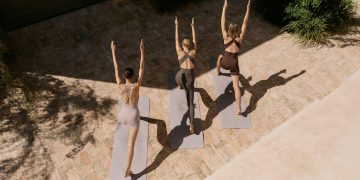Why We Need to Rethink the Vessels We Drink From
For centuries, the act of drinking water has been regarded as a basic human necessity. But in the age of biohacking and behavioral optimization, even this fundamental ritual is being reexamined through the lens of design, psychology, and culture. Emerging research suggests that the shape of the vessel we use to drink water—whether a tall glass, wide-mouthed mug, or a sculpted ceramic cup—may influence not only how much water we drink but also how we perceive thirst and hydration. While the concept may seem esoteric, scientists, designers, and health practitioners are taking a closer look at the interplay between form and function when it comes to everyday hydration. Could something as simple as a glass’s silhouette subtly enhance—or deter—our willingness to stay hydrated?
Behavioral Psychology and the Drinking Experience
At the core of this discussion is behavioral psychology: the study of how physical cues shape human decisions and habits. Studies in the 2010s already showed that glass size and shape significantly influenced alcohol and soft drink consumption. In particular, curved glasses were found to cause faster consumption compared to straight-sided ones, largely because visual perception of volume was skewed. More recently, hydration researchers have been applying this logic to water intake. A 2022 study published in Appetite explored how people’s water-drinking frequency changed depending on the shape of their cup. Participants given narrow-bottomed glasses drank 17% more water over the course of a day than those given wide, shallow tumblers. The likely reason? The vertical design mimicked bottled water ergonomics and made refills more satisfying and measurable. Such findings suggest that the right glass shape could become a subtle yet powerful nudge toward healthier hydration behavior.
The Neuroaesthetic Response to Shape
Drinking is a multisensory act. Beyond the liquid itself, we engage with the weight, temperature, and shape of the vessel. The growing field of neuroaesthetics—how design and art affect the brain—offers insight into why this matters. Curved objects tend to be perceived as more comforting and less threatening than angular ones. This translates into cup shape preference: users often describe rounded glasses as more “soothing,” which could subtly encourage use. Meanwhile, lightweight vessels are often associated with “weak” or “insubstantial” beverages, whereas heavier, sculpted glasses make water feel more “important” or satisfying. Texture also plays a role. Matte ceramics, for instance, can evoke warmth and earthiness, encouraging mindful sips, whereas slick plastics may be linked to disposability or rushed consumption. If the goal is to develop sustainable hydration habits, the aesthetics and ergonomics of the drinking vessel deserve far more attention than they currently receive.
Designing for Optimal Hydration
So what constitutes an “optimal” water glass design from a functional standpoint? First, it must be easy to grip and intuitive to use. Research on habit formation emphasizes that reducing friction—making a behavior simpler and more pleasurable—increases compliance. Glasses with a narrow middle or thumb indentation are easier to hold, especially for older adults or those with reduced hand strength. Secondly, visibility matters. Transparent materials allow for better volume awareness, helping users track their intake visually. Tall, cylindrical glasses appear to promote slower, more conscious drinking, while conical or hourglass-shaped glasses may accelerate sips. Importantly, capacity needs to balance portability and volume. While large mugs reduce the need for frequent refills, they can discourage initial uptake if perceived as too cumbersome. A growing number of hydration specialists now recommend using 12–16 oz vessels with gentle contours and textured grips to optimize both frequency and comfort.

The Ritual of Water in Cultural Contexts
Drinking water is more than a physiological act—it is often ritualized in cultural and spiritual traditions. In Japan, small ceramic cups are used to sip water slowly and intentionally, especially during tea ceremonies. In Morocco, ornate glasses are used to serve both tea and water in ritualistic social settings, elevating the experience through texture and color. In Nordic traditions, wooden kuksa cups carved by hand are used during nature walks, symbolizing connection to land and water. These vessels are more than utilitarian—they invite pause, attention, and reverence. In modern wellness culture, the resurgence of hand-blown glassware, artisanal mugs, and copper water bottles speaks to a growing desire to restore mindfulness to hydration. These traditions, ancient and modern, remind us that the shape and material of our cups can dramatically influence how we relate to the liquid inside them.
Modern Glass Design Meets Biohacking
Today’s wellness industry is embracing design innovation in hydration. Some water bottles now feature angular interiors to prevent bacteria build-up or are shaped to match the golden ratio for ergonomic appeal. Tech-forward companies are experimenting with cups that subtly vibrate to remind users to drink or glasses with built-in sensors that track water levels and sync with hydration apps. Even color and shape psychology are being integrated into designs—cobalt blue glasses for perceived “purity,” hourglass vessels to nudge slow sips, and asymmetrical forms to disrupt habitual consumption patterns and foster awareness. These experiments draw from cognitive science and sensory psychology, reframing water not as a utility but as a conscious choice. While the long-term efficacy of these tools still needs testing, the convergence of design and health science is offering compelling new frontiers in hydration behavior.
Can a Beautiful Cup Create a Hydration Habit?
There’s a psychological term for the positive behavior loop that arises when form and function align: the “aesthetic usability effect.” When people find a product visually pleasing, they are more likely to use it consistently—even if it’s not more functional than alternatives. In hydration, this suggests that the right water glass can become a keystone habit trigger. A glass you find beautiful or pleasant to hold may make you more likely to reach for it, and repeated interaction can foster an unconscious routine. This is why many hydration coaches now recommend clients “invest in a cup that makes them want to drink.” Whether it’s a sculpted Japanese ceramic, a Swedish minimalist tumbler, or a retro diner-style glass, design becomes a tool for habit scaffolding. When your drinking vessel evokes joy or satisfaction, hydration becomes not just maintenance—it becomes a ritual.
Children, Hydration, and Glass Design
Children are particularly responsive to vessel design. Pediatric studies show that younger kids drink more water from colorful, narrow-necked bottles than from standard cups. The ergonomic factor is key—smaller hands need grips, straws, or spouts that encourage self-service without spills. Yet aesthetics matter just as much. Cups featuring characters, colors, or tactile elements increase voluntary drinking rates in children aged 4–10. Experts now suggest using shape-based nudges to improve hydration compliance in school and at home, particularly in settings where sugary drinks are still dominant. By reframing water as “fun” through vessel interaction, healthy habits are more likely to stick long term.
The Shape of Wellness to Come
Hydration design is part of a larger trend: the material culture of wellbeing. Just as the shape of a meditation cushion or yoga mat can affect consistency and comfort, so too can the silhouette of a drinking glass. As science continues to explore the subtle ways that behavior is shaped by environment and tools, it’s becoming clear that wellness isn’t just about what we do—but how we do it. The future of hydration may not lie in high-tech smart bottles alone but in rethinking the oldest technology of all: the cup. Whether shaped like an hourglass, weighted for comfort, or infused with cultural significance, the perfect vessel may do more than hold water—it may hold space for healthier living.
Conclusion: Design Your Hydration, Design Your Day
Hydration is foundational to physical health, cognitive performance, and emotional regulation. Yet it is often approached as an afterthought. By reconsidering the shape, texture, and feel of the vessels we use, we unlock new pathways for daily self-care. In the end, the goal is not to find the “best” glass but to find the one that makes you want to fill it—again and again. From behavioral nudges to cultural beauty, the humble water glass is revealing its surprising power as a wellness tool. So the next time you reach for a drink, consider this: your glass might be shaping you as much as you shape your habits.






























